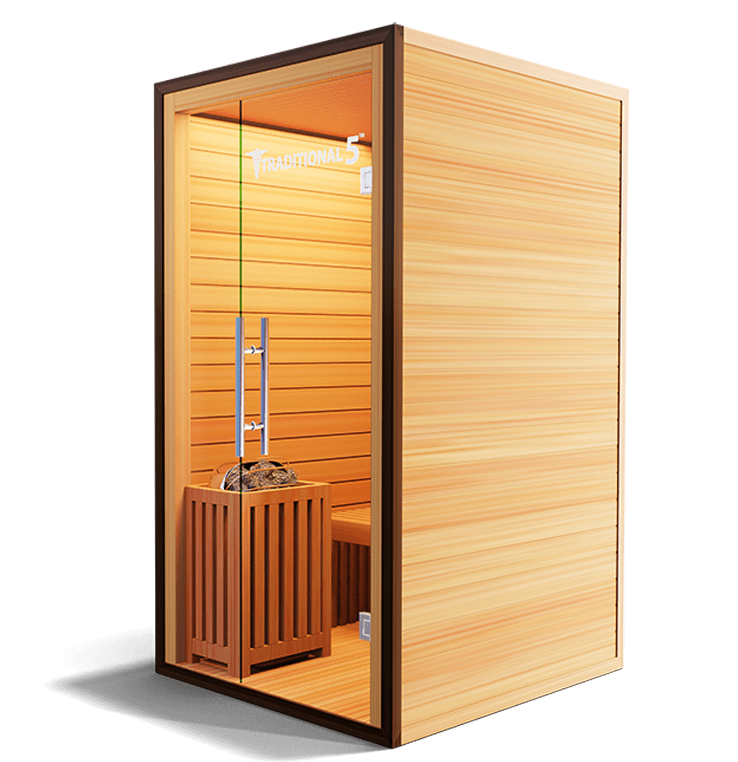How Traditional Sauna can Save You Time, Stress, and Money.
How Traditional Sauna can Save You Time, Stress, and Money.
Blog Article
The 2-Minute Rule for Traditional Sauna
Table of ContentsThe Main Principles Of Traditional Sauna Examine This Report about Traditional SaunaThe 9-Minute Rule for Traditional SaunaRumored Buzz on Traditional SaunaAll about Traditional Sauna
The majority of the weight shed in a sauna is water loss and is re-gained upon rehydrating. However, without a doubt sauna can be a vital part of a healthy weight loss program. To take a look at the distinctions between typical and IR saunas, I will separate these into verifiable, academic, and produced differences.Hence, the most popular point in the saunawhich goes to the ceiling directly over the sauna heateris commonly in between 185 and 190 F. Claims that a conventional sauna surpasses 200 F is simply not real and not appropriate for electrical saunas marketed in the US. The temperature level for a far-infrared sauna is normally set in between 120 and 140 F; nevertheless, unlike the traditional sauna, the goal in and IR area is not to accomplish a heat.
Due to this, the temperature level difference is practically unnecessary, given that excessive sweating causes both sauna types, yet the method of heating up the body is various. In an IR sauna the bather will feel hot and will sweat a lot, but at much reduced temperatures (Traditional Sauna). Thus, if the goal is to invest longer amount of times in the sauna, the IR sauna is an excellent option
When a conventional sauna has actually been correctly heated up, the sauna wall surfaces are warm, the air temperature level has actually achieved set temperature level and the rocks are very warmed. As an interesting side note, the heated walls and the rocks are sending out far-infrared warm, incorporated with the warmed air, to create an "enveloping warm".
How Traditional Sauna can Save You Time, Stress, and Money.

When the high temperature level is attained, the aspects cycle on and off to preserve the high temperature level. Most traditional sauna users enjoy putting water over the rocks to develop vapor to increase sauna moisture levels. The advantages of putting water over the rocks include: making the room much more comfortable, dampening the nasal passages, and allowing the usage of aromatherapy by mixing crucial oils with the water.

When the power enters the body, it triggers the body temperature to increase and inevitably results in sweat. In an infrared sauna it is very important for the emitters/heaters to continue to be on practically continuously. Since there is no mass of rocks to maintain heat, the sauna will certainly cool if the emitters shut down.
As stated above, the sauna bather in an infrared space wishes to position himself in front of operating emitters to obtain maximum advantage additional hints from the heat. The heating time for both rooms can be very different, depending upon how the spaces are made use of. For a traditional sauna, a bather should enable 30-40 minutes for the space to attain a preferred temperature level and to properly pre-heat the rocks.
Little Known Questions About Traditional Sauna.
A well constructed sauna will normally attain a temperature level of 150-160 F in concerning 30-40 mins. For hotter temperature levels, the space might require to warmth for a longer duration.

Conventional saunas often tend to be larger (therefore use even more electricity) than infrared saunas, although standard saunas are certainly redirected here readily available in one and two person dimensions. For a two-person conventional sauna, 5x6 or 5x7 dimension is most popular. The leading bench can comfortably seat two or 3 people and you can try this out is also enough time to exist down throughout the sauna session.
Some Of Traditional Sauna
The ordinary cost per kWH of electrical power in the U.S. is around $0.11, so a 4.5 kW heating unit will certainly cost approximately $.50 to run for one hour, if the heating system runs continuously for one hour. Typically a sauna heating system will certainly compete 75% of the very first hour and 50% of succeeding hours on since the elements cycle once the set temperature level is attained.

Finally, there is a seldom reviewed distinction in the social experience between the 2 areas. While our society has actually lost several of the social advantage of the conventional sauna experience, it can be really socially fulfilling (Traditional Sauna). From family time in the sauna, to heart-felt discussions with better halves, to sauna partiesthe standard sauna experience can result in intimate mingling
How Traditional Sauna can Save You Time, Stress, and Money.
Many greater end infrared rooms include tinted light treatment, sound systems and full-glass fronts. The dimension of the majority of rooms enable 2 individuals to conveniently use the space, while some layouts might allow for a 3rd or 4th individual to utilize the area. Custom infrared spaces are additionally readily available, with area dimensions offered up to 7' x 8' x 7' high.
Report this page